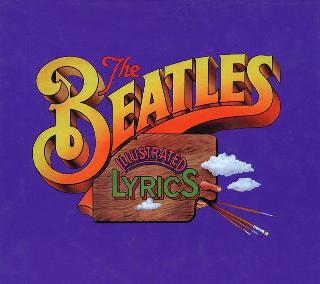Index
Home
Vorige
You Won't See Me
Composer(s) : Lennon and McCartney
Year : 1965
Chords/Tabs: You Won't See Me
Notes On "You Won't See Me" (YWSM)
Copyright 1989 Alan W. Pollack
All Rights Reserved
The backing vocal accompaniment in "You Won't See Me" contains a musical
secret which actually helps unify the entire song. There's a descending,
four-note chromatic scale fragment buried in one of those inner voices
("voices", George, not "light") which recurs throughout.
Huh, chromatic scale fragments ?
A chromatic scale is simply a scale which consists of all semi-tones; e.g.,
c-c#-d-d#-e-f etc. In our standard major/minor scales you never find even
two such semi-tones in a row. However, the use of chromatically altered
chords in a progression (the secondary dominant, "V-of-V", is an archetypal
example) allows us to easily knit fragments of chromatic scales into a
tonal harmonic fabric.
The Verse
The verse of YWSM is an unusual 18 measures long; actually it's a fairly
typical 4-times-4 measures followed by a repeat of the last two measures
of the fourth phrase. When we look closely at the harmony, we discover
that every phrase has a downward, four-note chromatic scale fragment buried
in an inner voice of the accompaniment; the piano part at first, and
later, the backing "oooh la la-la" vocals.
Three out of the four phrases in the verse (1, 2, and 4) are built on the
following chord progression:
inner voice: E D# D-nat C#
chords: A B D A
harmonic analysis A: I V-of-V IV I
This is the same chord progression, by the way, that opens
"Eight Days a Week"
though the cross-relation between the second and third chords is
greatly softened in this instance by the fact that the D# is followed
by the D natural in the same voice.
The third phrase ("We have lost the time") is built on a different chord
progression, but we still have a hidden chromatic scale, transposed this
time to fit the new chords:
inner voice: G F# F-nat E
chords: A7 D d A
harmonic analysis: V-of-IV IV iv* I
* Note the use above of the iv borrowed from the parallel minor,
a chord we first discussed when looking at "She Loves You."
Although I said that the fourth phrase ("And I will lose my mind") is
essentially the same as phrases 1 and 2, there is actually a significant
variation in the harmonic rhythm worth noting. Instead of the last two chords
each filling a measure each as they do in phrases 1 and 2, the last chord
makes an early, syncopated appearance in between beat 2 and 3 of the measure
before the one in which it would seem more squarely to belong.
If you have any doubt regarding the "intentional" use of the chromatic
scale as a unifying factor in this song, I direct you to these two syncopated
measures ("if *you* won't see me" "you won't see me") in which the accompanying
voices sing the same four-note scale fragment, this time in the mirror
image, upward direction! They even repeat it in measures 17 - 18 for emphasis.
You know there's a rehearsal of "Two of Us" in which Paul tells George
that "I'll give you a wink when she goes four in the bar." I can't help
feeling that the end of this verse in YWSM is metaphorically the same
gesture.
One final note -- look back to the brief introduction of our song and note
how the same syncopation on the same two chords is anticipated there. That
intro is so brief and seemingly so inconsequential, but it's relationship
to the end of the verse is yet another unifying force in the song.
BTW, even the middle eight of this song contains a downward chromatic scale
fragment which I'll leave to the inquisitive among you to uncover; two
quick hints -- it covers six notes, from f# down to c#, and it starts
right at the beginning of the break and ends at the return of the verse.
Unfolding Variation in the Vocal Arrangement
The variation of the vocal accompaniment each time the verse is repeated
is another point of interest in YWSM. Even a simple narrative description
is technically revealing:
Verse 1 - double track Macca solo, no backing voices
Verse 2 - add single part, though double tracked, George singing
"ooh la la-la"
Verse 3 - add two/three part harmony to "ooh la la-la" including a constant
pedal tone of A-natural in the top part
Verse 4 - same as Verse 3 but mixed further forward to sound "fuller"
The overall effect is one of the musical texture increasing in density
and complexity over the course of the song; this is somewhat curious
in light of the fact that the instrumental texture (piano, bass, drums, and
punctuating chords on the off beat in the electric guitar) is unchanged
throughout. In other words, this perceived increase in thickness is entirely
due to the vocals.
If you step back from it all and try and grasp the the song "in the
big picture" as a totality, I believe that this steady increase in complexity
of the four verses stands in beautiful contrast to the otherwise balanced
alternation of verses and middle-eights in the piece, providing a sort of
formalistic counterpoint.
Regards,
Alan (awp@mirror.tmc.com)
---
"They tried to fob you off on this musical charlatan,
but *I* gave him the test." 081689#9
Ook op Rubber Soul:
(c) 2024 Serge Girard


 (c) Alan Aldrigde, The Beatles Illustrated Lyrics
(c) Alan Aldrigde, The Beatles Illustrated Lyrics